The Indian Army is rapidly working to strengthen its artillery capabilities. A significant step in this direction is the Advanced Towed Artillery Gun System (ATAGS), which is entirely indigenous. This modern gun is a 155 mm/52 caliber artillery piece, planned for induction into the army by February 2027.
Developed by DRDO in collaboration with Bharat Forge and Tata Advanced Systems Limited (TASL), the project saw a contract of 6,900 crore INR signed in March 2025, for 307 ATAGS and 327 high-mobility 6x6 gun towing vehicles. Let's explore the features of the ATAGS, the current state of Indian artillery, and its significance.
What is ATAGS?
The ATAGS is a state-of-the-art 155 mm/52 caliber towed artillery piece designed for the Indian Army. It was developed by DRDO's Armament Research and Development Establishment (ARDE) in Pune, in partnership with prominent Indian companies Bharat Forge (Kalyani Strategic Systems) and Tata Advanced Systems.
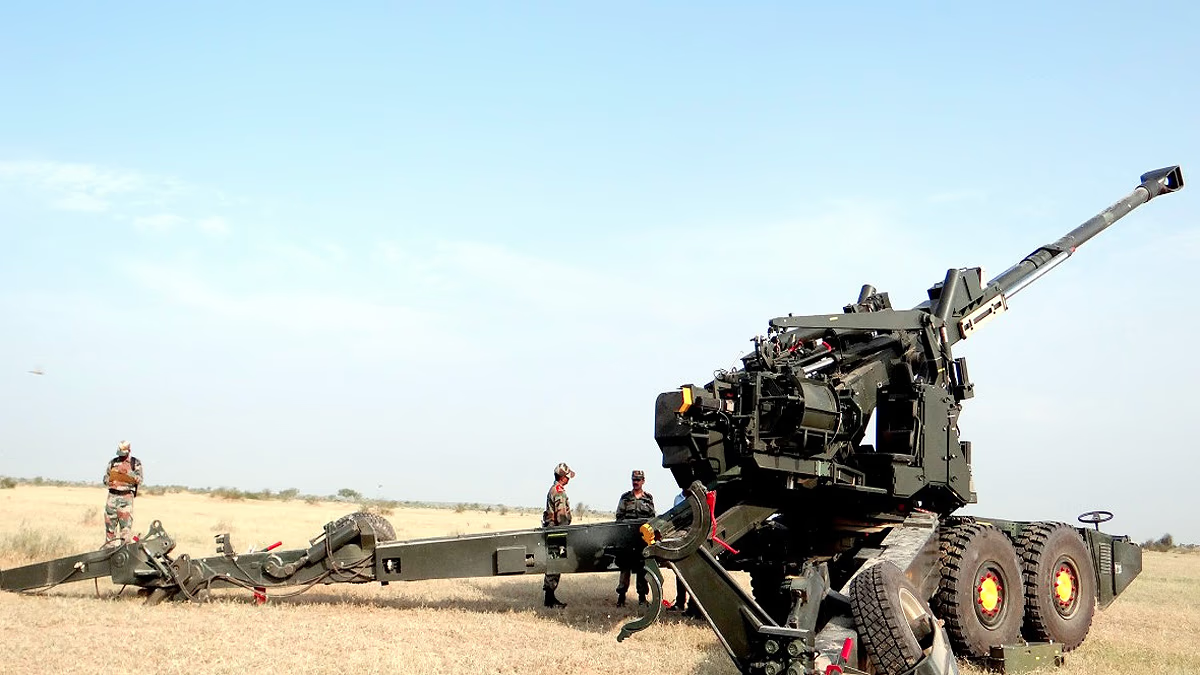
Source: aajtak
The project commenced in 2013 with the aim of replacing the army’s aging 105 mm and 130 mm artillery pieces. Developed under the initiatives of ‘Atmanirbhar Bharat’ (Self-Reliant India) and ‘Make in India’, over 65% of its components are indigenously manufactured.
Key Features of ATAGS
The ATAGS is recognized for its advanced technology and extended range. Here's what makes it stand out...
Range Capability
35 km with standard ERFB BT shells
48 km with High Explosive (HE-BB) shells
Achieved a record 48.074 km during the 2017 Pokhran field firing tests, setting a benchmark for its category.
Rapid Fire
Can fire 6 rounds in 85 seconds (burst mode).
Capability to fire 10 rounds within 2.5 minutes.
Consistent firing capacity of 60 rounds per hour.
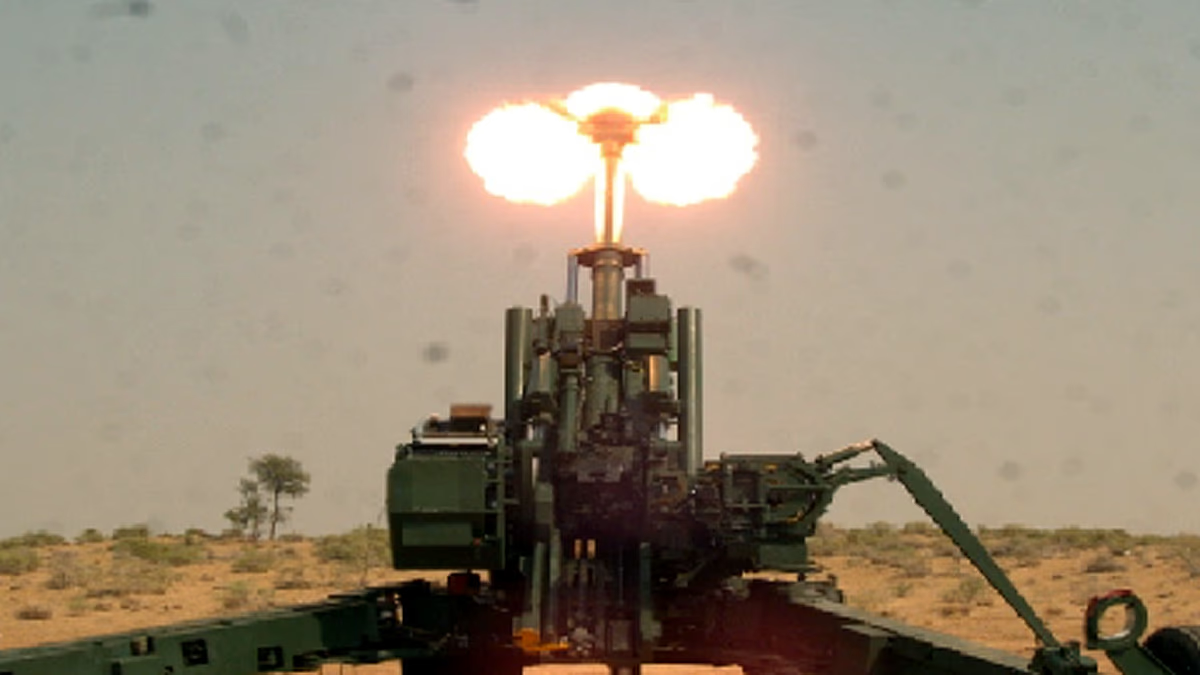
Source: aajtak
All-Electric Drive
Replaces traditional hydraulic systems with an all-electric drive, reducing maintenance while boosting reliability.
Automated System
Features fully automatic gun laying and ammunition handling systems.
Equipped with an Inertial Navigation System, muzzle velocity radar, and ballistic computer to enhance targeting accuracy.
Weight and Mobility
Weighs 18 tonnes (lighter models under development). Towed by high-mobility 6x6 vehicles, suitable for challenging terrains like deserts and mountains.
Adaptability to Environments
Functionally adaptable across diverse environments from deserts (Pokhran) to cold mountainous regions (Sikkim, Ladakh).
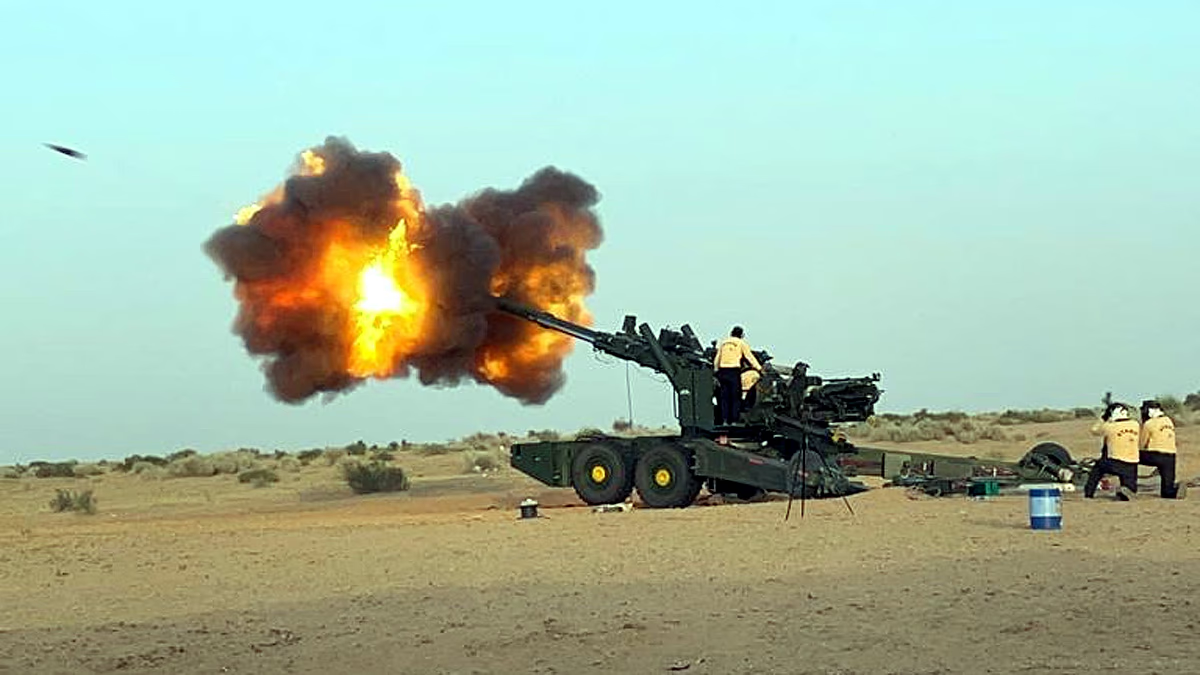
Source: aajtak
Indigenous Parts
Over 65% of components such as barrels, muzzle brakes, breach mechanisms, firing and recoil systems, and ammunition handling mechanisms are domestically produced.
Long-Range Ammunition
Capable of programming and firing Long Range Guided Munitions (LRGM) in the future, providing precise, deep-penetrating capabilities.
Mounted Gun System (MGS)
ATAGS has a truck-mounted variant based on an 8x8 high-mobility vehicle (BEML), weighing 30 tonnes, capable of rapid 'shoot-and-scoot' maneuvers.
ATAGS Development and Testing
Inception: Project started in 2013.

Source: aajtak
Testing
July 14, 2016: First successful firing test at Proof & Experimental Establishment (PXE) in Balasore, Odisha.
December 14, 2016: First live ammunition firing.
August 24-September 7, 2017: Heat/desert trials in Pokhran, achieving a record 48.074 km distance.
2021-22: Successful tests in high-altitude cold regions of Sikkim.
April 26-May 2, 2022: Final validation trial in Pokhran paved the way for army inclusion.
2020 Accident: Barrel burst during user trial injured four personnel, attributed to faulty ammunition from the Ordnance Factory Board, not a fault of ATAGS.
2023 Export: Armenia purchased 6 ATAGS and planned for 84 more units in 2024.
307 ATAGS Order and Deal
March 20, 2025: Cabinet Committee on Security (CCS) approved the procurement of 307 ATAGS and 327 6x6 gun towing vehicles.
March 26, 2025: Defense Ministry signed a contract worth 6,900 crore INR with Bharat Forge and Tata Advanced Systems.
Division of Production: Bharat Forge (KSSL) will produce 60% (184 units) and Tata (TASL) 40% (123 units) as Bharat Forge won the lowest bid.
Delivery: All 307 artillery pieces to be delivered within five years. The first regiment (18 cannons) to be integrated by February 2027.
Total Cost: 6,900 crore INR (approximately 830 million USD).
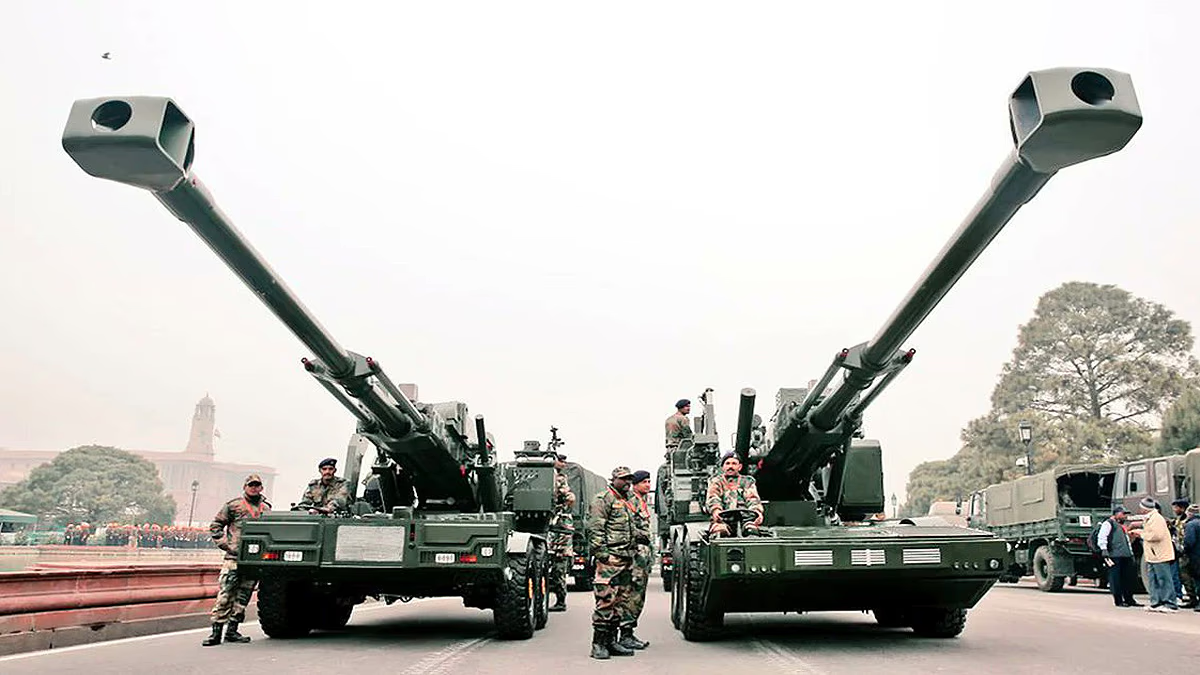
Source: aajtak
Artillery of the Indian Army: Current Status and Figures
The Indian Army's Field Artillery Rationalization Plan (FARP) launched in 1999 aimed for the induction of 2800-3600 modern 155 mm artillery by 2027. The target is now extended to 2040, which includes...
Towed Gun System (TGS)
: 1,580 units
ATAGS
: Order for 307 units, plans for 1200 more in the future.
Mounted Gun System (MGS)
: 814 unitsATAGS's 8x8 truck-mounted variant, trials to complete by 2026.
Self-Propelled Gun (Tracked)
: 100 unitsK9 Vajra-T: 100 units included, order for 200 more pending.
Self-Propelled Gun (Wheeled)
: 180 unitsPlanned procurement between 2025-2027.
Strongultra-Light Howitzer: 145 units M777: 145 units procured from the USA.
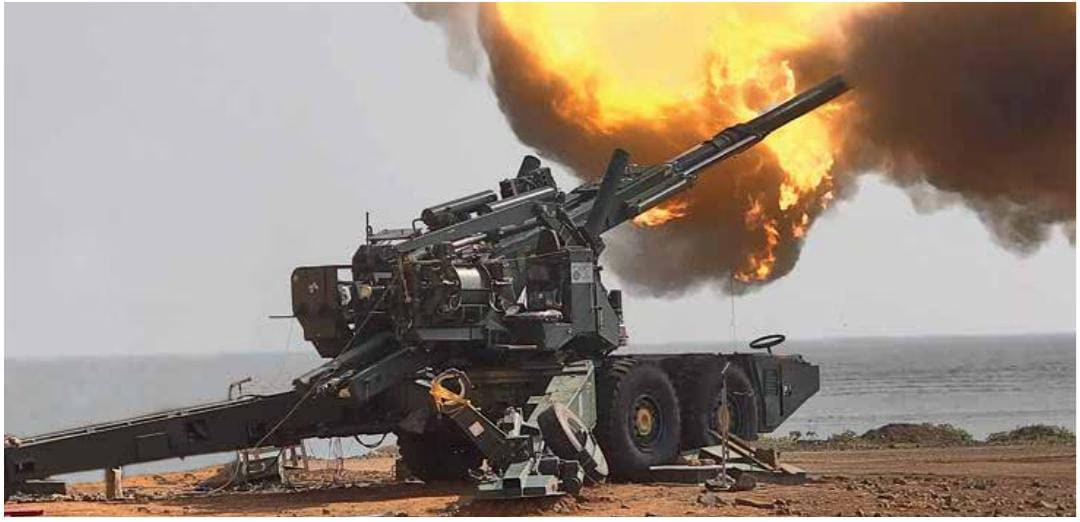
Source: aajtak
Rocket Systems
Pinaka
: 4 regiments included, 6 more on order. Range up to 38 km, with future upgrades to 120 km.
Smirch
: 3 regiments, range of 90 km.
Grad
: 5 regiments.
BrahMos Missile System
: Integrated.
Current Status
To date, only 8% of the artillery pieces have been integrated under FARP, with 17% contracted under proposals.
Outdated 105 mm and 130 mm guns still in use with lower range and technology.
Systems like ATAGS and K9 Vajra-T aim to bolster the army's strength, particularly along the borders with China and Pakistan.
Significance of ATAGS
Self-Reliance: With over 65% indigenous components, ATAGS boosts India's defense self-reliance.Partnership between the private sector (Bharat Forge, Tata) and DRDO exemplifies ‘Make in India’.Export to Armenia highlights ATAGS' global demand.
Power at the Border
The 48 km range and precise targeting make it effective against adversaries at the China and Pakistan borders.Post-Galwan clashes (2020), the army increased deployments along the LAC. ATAGS will significantly contribute to this.
Modern Technology
Automation, precision, and reduced maintenance place it among the world’s most advanced artillery.It will replace the aging Bofors 155 mm/39 caliber guns.
Challenges and Future
Delay Issues: Slow progress of FARP criticized by CAG, only 8% artillery integrated in 25 years.
Weight Challenge: ATAGS' 18-ton weight exceeds desired 15 tons; design improvements underway to address this.
Import Pressure: The army's earlier attempt to procure Israel's ATHOS guns was shelved in favor of indigenous ATAGS.
Future Planning: The army plans to acquire 1580 towed guns and 814 mounted guns, with ATAGS being central to this.




